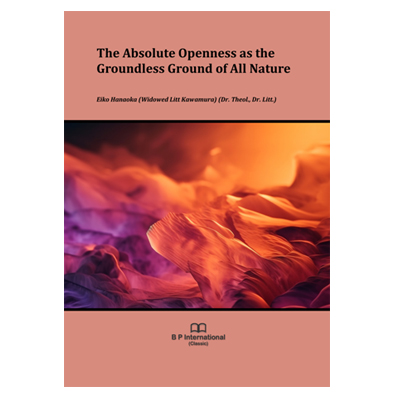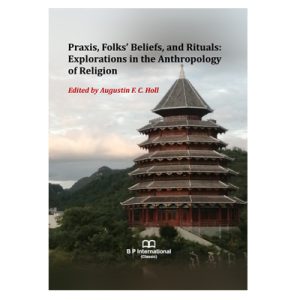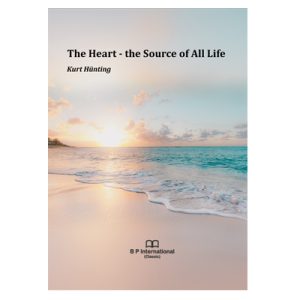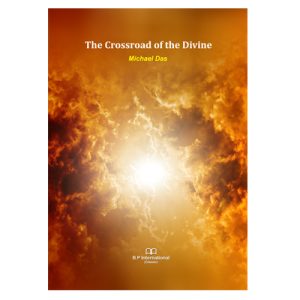In the beginning of this 21st century it seems that nature, including human beings, are going to ruin. The nature, in which human beings are included, is now regarded as natural resources. Human beings suffer from the gradually increasing destruction of their environments and through the disparity of earnings between those in the developed and developing nations.
Every human being on this planet is affected by rising temperatures due to the increase in CO2 emissions, which then lead to increased climate related problems such as floods, tornadoes and typhoons, forest fires and increased sea surface temperatures. This Earth crisis we are experiencing seems to be some kind of attack. All over the world, many ways have been tried to avoid this crisis and one of these is through SDGs (Sustainable Development Goals).
However, it seems to be philosophically very important, that a paradigm shift should be enforced, that can become the base or openness to be able to subsume the 17 goals in SDGs. The four paradigms of thinking and daily life since Plato (ca.427-ca.347 B.C.) in ancient Greek philosophy until G.W. F. Hegel (1770-1831) were as follows: relative being (e.g. the natural philosophy in ancient Greece), absolute being (e. g. the Catholic theology of Thomas Aquinas (ca.1225-1274) in European medieval ages), relative nothingness in modern ages (e.g. anxiety and despair in S. Kierkegaard (1813-1855) and nihil in nihilism (e.g. nihil in Nietzsche).
Kitaro Nishida (1870-1945), who advocated the philosophy of the field of the absolute nothingness and later became the founder of the philosophy of the Kyoto School including Hajime Tanabe (1885-1962) and Keiji Nishitani (1900-1990), advocated the paradigm “absolute nothingness” (=Buddhistic emptiness, or my term “absolute infinite openness”) that subsumes not only all kinds of thinking but also all nature including the above stated four paradigms.
Formerly Thomas S. Kuhn (1922-1996) tried to advocate the paradigm shift in his book The Structure of Scientific Revolution (1961). Hans Kueng (1928- ) also advocated the paradigm shift in his Catholic theology. The paradigm “absolute nothingness” subsuming not only all paradigms including the above mentioned four paradigms, but also all nature, is openness opened in the baseless base of all 17 goals of SDGs. The core of the philosophy of absolute nothingness, or that of the philosophy of place of absolute nothingness, consists in the premise of the theory of relativity and quantum theory since the beginning of the 20th century. In it, it is not the formal logic as substantial subjective logic that subsumes the predicative, but the non-substantial predicative logic that subsumes the subjective. We can find the philosophy on the base of the absolute nothingness not only in the work of K. Nishida, H. Tanabe, and K. Nishitani as the philosophers of the Kyoto-school, and in the organic philosophy of A.N. Whitehead, but also in the physics of Ervin Laszlo (1932-) from Hungary who premises the theory of relativity and quantum theory as a physicist, whose work, regrettably, I could not discuss in this book.
The special features of the Kyoto School and A.N. Whitehead (1861-1947) are as follows: ① non-subjective logic, but predicative logic subsuming subjective substantial logic, ② the logic of action, but not substance, ③ the logic of self-awareness of oneness between self-awareness and world-awareness, ④ the logic of oneness between theory and practice, that is the logic of reality.
On the base of the above mentioned logic of reality, the 17 goals of SDGs seem to be able to be achieved, although these achievements are gradual but important.
The scheme of this book is to inquire into the Absolute Infinite Openness as the field of “Absolute Nothingness” as in Nishida’s philosophy, where all duality and the dipole in this phenomenal world and the transcendental world originally are oneness, and where moreover the temporal phenomenal world and ultimate unity are oneness in perfect harmony. Such Absolute Infinite Openness as the groundless ground of original life is opened, for example in Buddhism, in the fifth stage of “the five stages leading to a correct understanding of the universe“ (Jap.: Shohen-goi, 正偏五位), according to Tozan Ryokai, as written in Chapter 8 in this book.
In this book, written in English, firstly the problem of the original coincidence of Zen (as the manifestation of the original life that streams in the groundless ground of all religions, that phenomenally means to live with true loyalty) and Christianity is discussed including the case in the organic philosophy of A. N. Whitehead, whose philosophy arrives at origin of Zen, Christianity and natural science, although his organic philosophy needs a few revisions. Nevertheless, Whiteheadian organic philosophy is thought from the origin of natural science and non-substantial philosophy as becoming and action. His organic philosophy could be looked upon as the most adequate philosopher for the present (after the philosophy in K. Nishida, H. Tanabe and K. Nishitani) to consider the relation between natural science and non-substantial philosophy, over which I wanted to think since my school days.
Secondly, the problem of the infinite openness in the temporal and phenomenal world and the absolute openness opened in the crossroad of the horizontal dimension with the vertical dimension, and therefore of time and space originally are in harmonious oneness through the mediation of the self-awareness of the individual and world. In the Absolute Openness (as the field of “Absolute Nothingness” as in Nishida’s philosophy) the Absolute Infinite Openness and the temporal phenomenal world are oneness subsuming not only SDGs but also all nature. However, the problem of difference between ethical world closed to the Absolute Openness and the world of emptiness as the Absolute and simultaneously Infinite Openness are also discussed.





